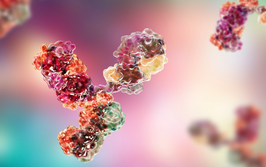The Supported Supply Chain
Alone, drug developers will struggle to reduce all the risks of counterfeiting. Further collaboration is needed. Staffan Widengren, Director Corporate Projects at Recipharm, and Dexter Tjoa, Chief Executive Officer at Tjoapack, describe the role that CMOs can play in the fight against counterfeits.

This article is part of our special focus on "traditional" pharma: The Small Molecule Manufacturer (read more here). You can find more articles from The Small Manufacturer here.

Dexter Tjoa, Chief Executive Officer, Tjoapack.
What challenges do manufacturers face when trying to prevent counterfeits?
Staffan Widengren: For the legal supply chain, one major challenge is improving efficiency during the packaging process. The serialization of a product is a complex process that requires the right equipment, the right software, and the right expertise. Even the smallest error can cause major disruption to supply, so companies either need to invest in internal resources or employ third party suppliers with the relevant experience.
Clearly, companies must also stay on top of evolving regulations. Many of the serialization measures are now a legal requirement, but there are likely to be further changes as we come to realize what works most effectively. For example, when it comes to the non-regulated supply chain and the online supply of medicines, there is still a long way to go. Ultimately, more regulations will be put in place to bring governance in line with the offline supply of medicines.
Aggregation (where the serialized data from each product pack is aggregated at the case and pallet level) is one way of overcoming efficiency challenges. This regulation is only required in some markets, but its implementation can streamline the journey of products through the supply chain, making packs more easily identifiable, if issues occur. The parent-child data relationship developed through the aggregation process also makes it harder for counterfeit medicines to enter the supply chain because of the level of data involved.
Currently, not all regulations are fully aligned across the globe and some, such as the US and Russian regulations, are more stringent than others. Serialization measures are a brilliant start, but represent just the first step.
Dexter Tjoa: I agree with Staffan; manufacturers are working hard to lessen the problems caused by counterfeiting. Over 40 countries are working towards or already have serialization regulations in place to ensure supply chain security and, ultimately, patient safety. However, the vast number of differing requirements and international standards as you move from market to market have made compliance very difficult.
Overcoming these complexities requires significant resources, CAPEX, and expertise. Many drug manufacturers are turning to contract packaging manufacturers for support in their adherence to regulatory requirements.
Dexter Tjoa: I agree with Staffan; manufacturers are working hard to lessen the problems caused by counterfeiting. Over 40 countries are working towards or already have serialization regulations in place to ensure supply chain security and, ultimately, patient safety. However, the vast number of differing requirements and international standards as you move from market to market have made compliance very difficult.
Overcoming these complexities requires significant resources, CAPEX, and expertise. Many drug manufacturers are turning to contract packaging manufacturers for support in their adherence to regulatory requirements.

Is a more global regulatory approach needed?
Tjoa: As more countries legislate for serialization, the supply chain will become increasingly secure. Aligning regulations would be an ideal aspiration, but at the moment it’s simply impractical; some regions lack the infrastructure or resources to implement the required processes.Market forces will more effectively resolve challenges related to different regulatory demands through their continued collaboration with regional contract partners who have the capacity to step in to develop and deliver the required serialization capabilities allowing businesses to maintain existing access as well as new markets.
Widengren: In my opinion,the industry should look towards developing a global program that could be implemented “as standard” across each country. At the moment, each country has its own legislation with individual requirements, which of course generates challenges. Introducing one global program would ensure that all companies have access to the required data and reduce inefficiencies throughout the supply chain. The more cohesive regulations become, the stronger the chance of completely removing counterfeit medicines from the supply chain.
Which emerging technologies and strategies are likely to have the greatest impact on the trade of counterfeit medicines?

Staffan Widengren, Director Corporate Projects at Recipharm.
Tjoa: As we move forward and as regulations evolve, there will be a number of opportunities for companies to review and transform their processes to allow for more efficient and secure packaging. Many companies are exploring data management systems that use technologies such as blockchain to create an immutable ledger that acts as a digital mirror of the supply chain. Businesses will be able to use such data as the groundwork for platforms that can track logistics across the supply chain, and use analytics to improve current operational processes, such as inventory management.
Companies that adopt future-proof solutions now will find themselves with a competitive advantage when regulations do come into play; just like when serialization laws came into force, and the businesses that had already explored track and trace solutions were well equipped to meet compliance requirements quickly and efficiently...
Widengren: It is far too early to see the full effect of serialization and new legislation. But over time, as supply chain control increases and companies become more sophisticated at monitoring the movement of products, counterfeiters will find it increasingly difficult to push drugs into the market. As more standardization is introduced across various markets, it will become easier to monitor the overall supply chain. And many players in the industry have successfully managed to implement measures that can cater to numerous market requirements. At Recipharm, we invested in serialization right at the start of the industry discussion. We bolstered our resources and established a dedicated team to ensure we had the right measures in place. Those of us who took a proactive approach to tackling legislation are feeling the benefits now.
Over the years, huge steps have been taken to regulate the pharmaceutical supply chain, but problems still remain – especially when it comes to online platforms. Online drug sales make it incredibly hard to identify counterfeit medicines, track them, and stop them before they reach the patient. A higher level of governance is required to improve this situation. To prevent the non-regulated sales of counterfeits on the Internet, companies must face tougher penalties for failing to regulate their supply chains.
With all this being said, the supply chains of developed countries have generally been safe environments. Even before the introduction of laws like FMD and DSCSA, counterfeit medicines were very rarely found in the supply chain. And so, addressing supply chain issues in emerging markets will be crucial in rectifying the damage caused by the fake drug trade. Helping companies in these locations access new software and equipment should be a goal for everyone interested in protecting the global reputation of the pharmaceutical industry.
After finishing my degree, I envisioned a career in science communications. However, life took an unexpected turn and I ended up teaching abroad. Though the experience was amazing and I learned a great deal from it, I jumped at the opportunity to work for Texere. I'm excited to see where this new journey takes me!



















